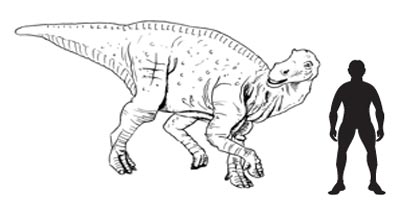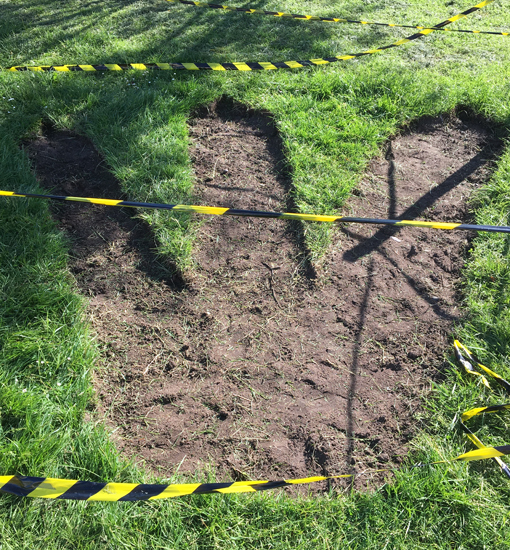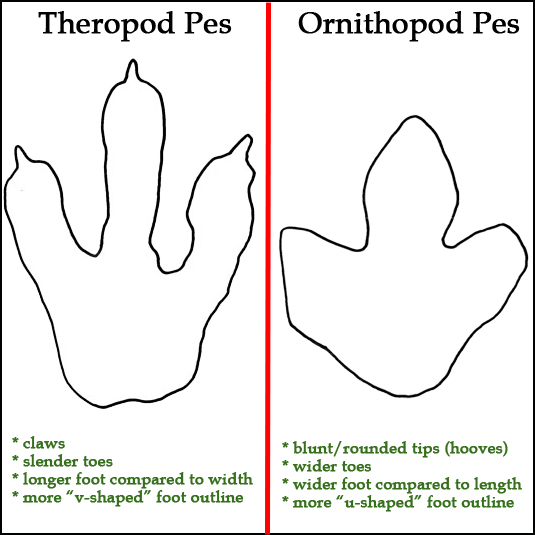Sensational Theropod Tracks and Ornithopod Tracks
Distinguishing Theropod tracks from Ornithopod Tracks
Recently, Everything Dinosaur posted an article about a new study of the Dinosaur Stampede National Monument (Queensland, Australia), in which a three-dimensional Australovenator foot was used to assess what type of dinosaur was responsible for producing a set of eleven, large, three-toed footprints. In this innovative research, conducted by scientists from the Australian Age of Dinosaurs Museum of Natural History and the University of Newcastle (New South Wales), it was concluded that the tracks could have been made by a meat-eating dinosaur.
Theropod and Ornithopod Tracks
Previous research had challenged the interpretation that the trace fossil site preserves evidence of a dinosaur stampede as a substantial group of smaller plant-eating dinosaurs evaded an attack from a big theropod.
Other interpretations of the Dinosaur Stampede National Monument have suggested that the hundreds of tracks preserved at this location, some seventy miles south of the town of Winton in Queensland, do not represent evidence of a large, meat-eating dinosaur attacking a flock of smaller dinosaurs. Some scientists have contradicted this analysis and proposed that the bigger, tridactyl tracks were made by a big ornithopod, a herbivorous dinosaur, something like a Muttaburrasaurus.
Could the Larger Tracks at the Dinosaur Stampede National Monument have been made by a Muttaburrasaurus?
Picture credit: Everything Dinosaur
The picture (above) shows a Muttaburrasaurus scale drawing. The drawing is based upon a dinosaur model from the CollectA range.
To view this range of prehistoric animal models: CollectA Age of Dinosaurs Popular Models.
The Confusion Between Bipedal Plant-eaters and Bipedal Meat-eaters
Having published our article, we were then emailed and asked to explain how it was possible to confuse the footprints of a large bipedal, herbivorous dinosaur with those of an equally sized carnivorous dinosaur. So, here are some pointers about the differences between the types of tracks, plus an explanation as to why it can be so hard to pin down which type of bipedal dinosaur left prints and tracks.
For those scientists that study dinosaur footprints, being able to distinguish the prints from a meat-eating theropod from those of a large, herbivorous ornithopod is a challenging task. If the prints are ideally preserved with lots of detail, identification can be relatively straight-forward, if the body fossils of a dinosaur could be found close by, then there would be further evidence to support a diagnosis, but sadly, discovering exquisitely preserved dinosaur tracks – these are very rare events indeed!
It is Not Easy Identifying/Classifying Dinosaur Footprints
An Identification Guide
The track made by a theropod dinosaur (the pes of a meat-eating dinosaur), if perfectly preserved, should show sizeable claw marks on the end of the toes. The toes themselves should look quite slender and in general terms the print should look longer than it is wide. The length of the foot when compared to the width should give the track a characteristic “v shape”.
The well-preserved track of a large ornithopod, a plant-eater should lack distinctive claw marks. The ends of the toes should be more blunt and rounded in appearance. The toes tend to be quite wide and the foot proportions are different. For example, the foot may be much wider. The wider pes as a proportion of overall foot length gives the track a “u shape”.
Ornithopod versus Theropod Footprint – Identification Guide
Picture credit: Everything Dinosaur
Identifying the Dinosaur from the Footprint – Problems
The fact that something so ephemeral as a single track or a trackway can survive for millions of years is remarkable. However, over time these trace fossils can become distorted making identification extremely difficult. Features, once very striking are easily masked by the effect of weathering and erosion. Any repairs undertaken or attempts to preserve the prints could also lead to the loss of definition, causing further problems when it comes to making an assessment as to what type of animal produced the tracks.
Unauthorised attempts to make casts could also result in considerable damage to the track(s) thus further hampering identification.
It does not matter, whether the track represents a natural cast (created by sediments filling in a track), or whether it is a true track (the impression preserved in the ground made by the foot itself), determining what type of creature made the prints is an extremely difficult process. Some of the most difficult tracks to interpret of all are undertracks. An undertrack is formed below the sediment as surface material is compressed downwards as the organism moved across the area. These undertracks lack many types of marks made only at the surface, scratches, scuffs, clear claw impressions or any evidence of a tail drag.
The thousands of dinosaur tracks at the Lark Quarry site (Dinosaur Stampede National Monument), are truly a remarkable record of the behaviour and activity of a group of dinosaurs. What exactly those tracks represent is open to different interpretations – but that’s science for you.
Further articles on the Lark Quarry dinosaur tracks:
Could Australovenator have made some of the tracks at Lark Quarry?: Lark Quarry Dinosaur Footprints – Scientists Re-examine the Evidence.
Lark Quarry Tracks Re-examined: A New Interpretation of the Lark Quarry Fossils.
Visit the award-winning Everything Dinosaur website: Everything Dinosaur.




